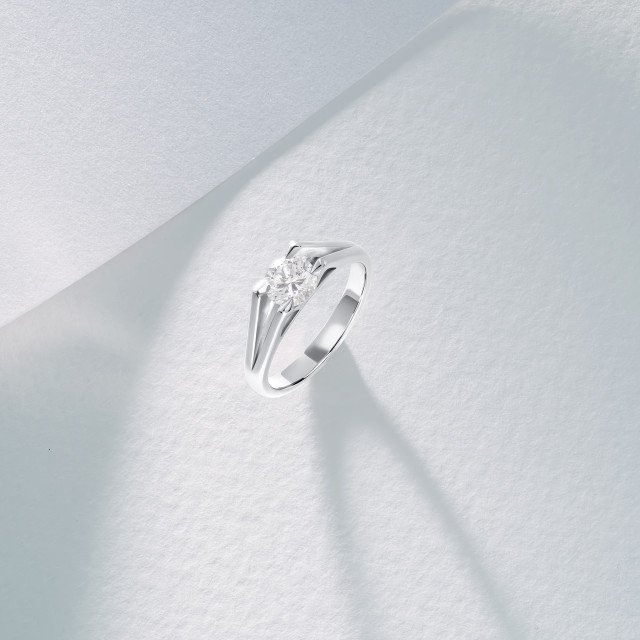 Image 1 of
Image 1 of


old cut diamond ring - ~0.70 carats
An Old European Brilliant cut diamond, weighing approx. 0.70 carats, assessed in the mount as colour G/H and clarity SI, claw set in a Victorian 18ct yellow gold solitaire ring, hallmark dated 1888, size P/Q. Ring weighs 4 grams.
An Old European Brilliant cut diamond, weighing approx. 0.70 carats, assessed in the mount as colour G/H and clarity SI, claw set in a Victorian 18ct yellow gold solitaire ring, hallmark dated 1888, size P/Q. Ring weighs 4 grams.
An Old European Brilliant cut diamond, weighing approx. 0.70 carats, assessed in the mount as colour G/H and clarity SI, claw set in a Victorian 18ct yellow gold solitaire ring, hallmark dated 1888, size P/Q. Ring weighs 4 grams.
The diamond is a lovely example of an Old European Brilliant displaying the beauty and charm of old cut diamonds. The colour is fine and its clarity free from any unsightly inclusions.
When cut and polished in the 19th century diamonds were not fashioned to the perfect mathematical precision of the outline and proportions of modern cut diamonds, more emphasis was given to revealing the beauty of the diamond while retaining as much weight as possible.
The outline of this diamond is more circular than those of earlier fashioned Old Mine Brilliant diamonds and retains small areas of the ‘skin’ of the diamond crystal on the outer places of the gem, so typical of the polishing technique of its time.
Having a near circular outline is characteristic of old cut diamonds fashioned from the 1870s when sufficient power and improved turning (bruting) tools were introduced into diamond cutting factories to cut (‘brute’) the girdle outlines into circles from the squarish and cushion shapes of diamond crystals. Perfection of the circular outline and uniform girdle thickness however were not possible until further technological and design progress was made at the turn of the 20th century.
In the late 19th century, London and Amsterdam were the major diamond cutting centres, so the term Old European Brilliant is used today to describe old cut diamonds fashioned with near circular outlines, large eye-visible culet facets and table facets smaller than those of modern round brilliant diamonds.
The diamond is contemporary with the ring mount so it is likely the diamond is of South African origin, the deposits being discovered in the late 1860s and within a decade large volumes of diamond crystals were being shipped from the Cape to London for cutting.












